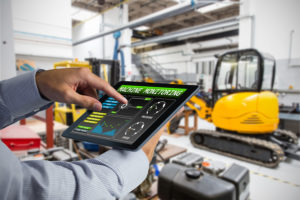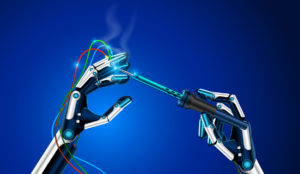In 1913, Henry Ford installed the first moving assembly line, sparking a radical transformation in the way automakers built cars. Ford brought cars to the masses, transforming not only manufacturing but also society forever. Over 100 years later, we’re witnessing another manufacturing revolution — with manufacturers bringing groundbreaking innovations onto plant floors every year. One of the ways 21st-century manufacturers are pioneering technology to reshape production is through cognitive manufacturing.
What is cognitive manufacturing?

Company leaders have analyzed data to improve their businesses for years. Henry Ford measured how fast the Model T moved down the assembly line, combining the collected data with his cognitive judgment to improve efficiency and product quality. But over the last few decades, developers and engineers have produced cognitive technology using skills formerly unique only to humans until introduced into machine capabilities.
Cognitive computing takes big data analytics to a new level. It allows systems to learn, form hypotheses, and make recommendations faster than most humans. According to Anirban Bhattacharyya — IBM associate partner of digital strategy, cognitive process transformation, digital operations, and cognitive manufacturing — in a WESTEC keynote, “The core characteristics of a cognitive system are understanding, reasoning, learning and interacting.” Cognitive machines harness vast quantities of language and sensory data to reason and learn over time. On the manufacturing floor, a cognitive machine never gets tired, never takes a vacation, and doesn’t need a 401(k). It works around-the-clock to increase productivity and product quality while relentlessly learning and improving.
What are the benefits of cognitive manufacturing?
Cognitive manufacturing transforms the way humans and machines interact. For example, a plant supervisor can receive real-time diagnostics via cognitive machines, allowing him or her to prevent costly downtime and increase productivity. With cognition, technicians have years of performance, quality insights, and repair history at their fingertips. Cognitive machines can help predict breakdowns and errors before they occur. And with the help of virtual and augmented reality technologies, manufacturing engineers can re-create these predicted errors in safe digital environments and practice fixing them from anywhere in the world.

Cognitive machines also accelerate laborious visual inspection processes. They can identify defects on assembly lines faster and more accurately than humans, increasing output and enhancing quality at the same time. IBM researchers dove into this space by launching their Watson Internet of Things (IoT) solution, which brings a “cognitive assistant” to plant floors. It uses a high-definition camera to capture images and spot tiny defects as products move down assembly lines, allowing manufacturers to improve product quality in real time. According to an IBM press release, “In fact, based on early testing of a production cycle that typically takes 8 days with ½ day required for needed visual inspection, the new IBM solution reduced inspection time by 80 percent and cut manufacturing defects by 7-10 percent.”
So, what is the next frontier in cognitive manufacturing? In the not-so-distant future, cognitive machines will likely not only have the ability to analyze data and tell plant floor technicians when something is wrong but also automatically act on those recommendations. Although that level of automation is still a few years away, there’s no doubt cognition is already reshaping the face of plant floors. And if Henry Ford were alive today, he would probably be astounded at how his first manufacturing breakthrough has transformed the industry into what we see today.
